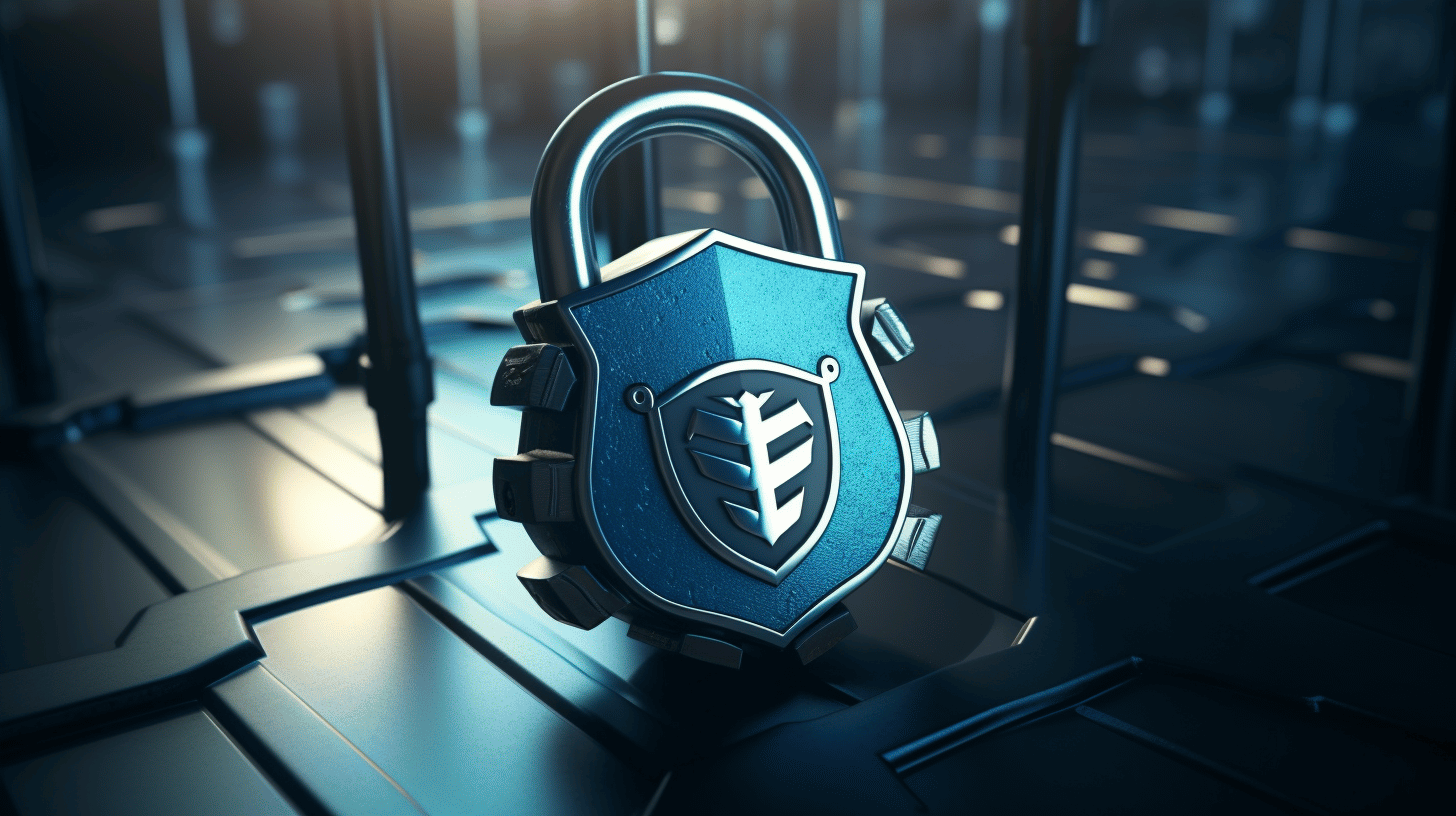在当今的数字环境中,网站安全至关重要。随着网络攻击的频率和复杂性不断增加,采取主动措施保护您的 WordPress 网站至关重要。毕竟,一次安全漏洞可能会造成毁灭性的后果,例如数据被盗、声誉受损,甚至网站停机。
但不要担心!在本文中,我们将指导您如何保护您的 WordPress 网站并确保最高级别的安全性。无论您是经验丰富的 WordPress 用户还是刚刚开始使用,这些提示和最佳实践都将使您能够保护您的网站免受常见的安全威胁。
从设置强密码到实施 SSL/TLS 加密,我们将介绍各种安全措施,您可以轻松实施这些措施来加强网站的防御能力。此外,我们还将探索一些基本的 WordPress 安全插件,这些插件可以进一步增强您网站的保护。
请记住,保护您的网站不仅仅是为了维护您自己的利益,它还涉及保护用户数据、维护信任和声誉以及防止代价高昂的网站停机。所以,让我们深入研究,让您的 WordPress 网站成为安全堡垒!
🔍 你可知道?:根据 Sucuri 的报告,2020 年,WordPress 占被黑客入侵的 CMS 平台的 90% 以上。在当今的数字环境中,确保 WordPress 网站的安全性不再是一种选择,而是一种必需品。
网站安全的重要性
要想成功运营网站,就不能低估网站安全的重要性。随着网络威胁日益复杂,采取主动措施保护网站免受潜在漏洞的侵害至关重要。网站安全不仅可以保护用户的敏感数据,还有助于维护在线空间的信任和声誉。此外,安全的网站可以防止代价高昂的停机,确保无缝的用户体验。
保护用户数据
网站安全至关重要的主要原因之一是保护用户的个人信息。无论您运营的是电子商务平台还是博客,都有可能收集某种形式的用户数据。这可能包括姓名、电子邮件地址、付款信息等。如果没有适当的安全措施,这些宝贵的信息就会容易受到黑客和恶意行为者的攻击。通过实施强大的安全协议(例如 SSL 证书、防火墙和定期安全审核),您可以防止未经授权的访问并保护用户的数据免受潜在泄露。
维护信任和声誉
在当今的数字环境中,信任和声誉对于任何企业或组织都至关重要。用户希望在与网站互动时感到自信,知道他们的个人信息不会被窥探。当组织未能优先考虑网站安全时,它不仅会危及用户数据,还会削弱信任。安全漏洞或数据泄露的消息会迅速传播,损害您的声誉并可能导致法律后果。通过投资网站安全,您可以展示您致力于保护用户信息、培养信任和维护在线社区良好声誉的承诺。
防止网站停机
网站安全的另一个重要方面是防止停机。想象一下您的网站受到攻击,导致未经授权的访问或恶意软件感染。这不仅会危及用户数据,还会导致您的网站下线。停机可能会造成严重后果,包括收入损失、用户参与度下降以及对搜索引擎排名产生负面影响。通过实施定期备份、入侵检测系统和漏洞补丁等安全措施,您可以最大限度地降低可能导致网站停机的安全事件的风险。
💡 你可知道? 根据谷歌的一项研究,遭到黑客攻击的网站通常会导致搜索引擎排名大幅下降,从而导致自然流量减少和潜在的收入损失。
总之,网站安全应该是每个网站所有者的首要任务。通过保护用户数据、维护信任和声誉以及防止网站停机,您可以确保为用户提供安全、无缝的在线体验。所以不要等到为时已晚;立即采取主动措施,最大限度地提高网站安全性并保护您的在线形象。
👉 单击此处了解有关最大程度提高 WordPress 用户网站安全性的更多信息。
WordPress 网站的常见安全威胁
🔒简介:
WordPress 因其用户友好的界面和广泛的自定义选项而成为网站所有者的热门选择。然而,必须承认 WordPress 网站也可能成为各种安全威胁的目标。在本文中,我们将探讨 WordPress 网站面临的一些最常见的安全威胁,并讨论有效保护您网站的措施。
恶意软件👾
恶意软件是恶意软件的简称,对 WordPress 网站构成重大威胁。它指的是任何旨在破坏、损坏或未经授权访问计算机系统的软件。恶意软件可以通过注入恶意代码、窃取敏感信息甚至导致网站崩溃来破坏您的网站。
以下是一些可能影响 WordPress 网站的常见恶意软件类型:
- 病毒: 就像感染人类的病毒一样,计算机病毒会自我复制并传播到您的网站,从而导致各种问题。
- 特洛伊木马: 这些恶意软件程序会伪装成合法软件,诱骗用户下载并安装。一旦进入您的系统,它们就会危害您网站的安全。
- 勒索软件: 这种特别恶意的恶意软件会加密您的文件并将其扣为人质,直到您支付赎金。
为了保护您的 WordPress 网站免受恶意软件攻击,实施以下措施至关重要:
- 定期更新您的 WordPress 核心、主题和插件,以确保您拥有最新的安全补丁。
- 安装信誉良好的安全插件,例如 WP防火墙,可以检测并阻止您网站上的恶意活动。
- 对与您的 WordPress 网站关联的所有用户帐户使用强大且独特的密码。
- 使用安全插件或在线扫描仪定期扫描您的网站是否存在恶意软件。
DDoS 攻击
分布式拒绝服务 (DDoS) 攻击旨在通过大量流量淹没网站的服务器或网络,使合法用户无法访问。黑客通过利用僵尸网络(受感染的计算机或远程控制的设备网络)来实现此目的。
DDoS 攻击对 WordPress 网站的影响可能是毁灭性的,导致收入损失、声誉受损和停机。以下是可能发生 DDoS 攻击的一些迹象:
- 网站性能缓慢或无响应
- 网络流量异常高
- 服务器错误或崩溃
为了保护您的 WordPress 网站免受 DDoS 攻击,请考虑实施以下措施:
- 利用内容分发网络 (CDN) 将您网站的文件分发到多个服务器,使其更能应对流量高峰。
- 实施速率限制以限制来自单个 IP 地址允许的请求数量。
- 考虑投资一项 DDoS 缓解服务,它可以在恶意流量到达您的网站之前识别并阻止它。
暴力攻击💪
暴力攻击涉及一个自动过程,即系统地尝试各种用户名和密码组合,直到找到正确的组合。如果成功,黑客将获得对您的 WordPress 网站的未经授权的访问权限,从而使他们能够操纵、提取或删除敏感数据。
您可以通过以下一些方法保护您的 WordPress 网站免受暴力攻击:
- 对与您的网站关联的所有用户帐户实施强密码策略。
- 实施登录尝试次数限制,以防止攻击者反复猜测密码。
- 考虑使用双因素身份验证为您网站的登录过程添加额外的安全层。
SQL注入
当黑客利用 WordPress 网站代码中的漏洞将恶意 SQL 语句注入您的 Web 应用程序时,就会发生 SQL 注入。如果成功,攻击者可以未经授权访问您网站的数据库、操纵数据,甚至删除整个数据库。
为了保护您的 WordPress 网站免受 SQL 注入,请考虑采取以下措施:
- 保持 WordPress 核心、主题和插件更新,以确保修补任何漏洞。
- 实施严格的输入验证和参数化查询,以防止未经授权的 SQL 注入。
- 定期备份您的网站的数据库和文件,以最大限度地减少成功攻击的影响。
保护你的 WordPress 网站
介绍
说到网站安全,需要特别注意的一个平台是 WordPress。作为广泛使用的内容管理系统 (CMS),WordPress 是黑客和恶意攻击的主要目标。为了确保 WordPress 网站的安全性和完整性,实施强大的安全措施至关重要。在本文中,我们将探讨保护 WordPress 网站的各种策略,包括密码最佳实践、SSL/TLS 加密等。通过遵循这些准则,您可以加强 WordPress 网站以抵御潜在威胁并高枕无忧。
设置强密码
保护 WordPress 网站最简单但最有效的方法之一是设置强密码。强密码是抵御暴力攻击和未经授权访问的重要屏障。以下是一些帮助您创建强密码的提示:
- 混合使用大写和小写字母、数字和特殊字符。
- 避免使用常见模式或容易猜到的信息,例如出生日期或宠物名字。
- 为了增加安全性,密码长度至少为 12 个字符或更长。
- 考虑使用安全的密码管理工具来安全地生成和存储您的密码。
请记住,您的密码是您的 WordPress 网站的第一道防线,因此选择一个既复杂又独特的密码以最大限度地降低未经授权访问的风险至关重要。
更新 WordPress 核心
定期更新 WordPress 核心是确保网站安全的重要做法。WordPress 会定期发布更新,通常包括安全补丁、错误修复和功能增强。通过保持最新版本,您可以确保您的网站免受已知漏洞的侵害。以下是更新 WordPress 至关重要的原因:
- 更新通常包括解决潜在漏洞的安全补丁。
- 新功能和增强功能可提高您网站的整体功能和稳定性。
- 保持最新版本可确保与插件和主题的兼容性。
为了保证 WordPress 网站的安全,请务必定期检查更新并及时应用。启用自动更新也是轻松保护网站安全的好方法。
使用安全托管
选择安全的托管服务提供商是保护您的 WordPress 网站的另一个重要方面。合适的托管服务提供商可以提供必要的安全功能和保障措施,以保护您的网站免受潜在威胁。选择托管服务提供商时,请考虑以下因素:
- 寻找提供强大安全措施(如防火墙和恶意软件扫描)的提供商。
- 检查他们是否提供定期备份和恢复选项,以便从任何安全事件中快速恢复。
- 确保托管服务提供商拥有良好的声誉和强大的客户支持。
通过选择值得信赖且安全的托管服务提供商,您可以显著降低安全漏洞的风险,并享受 WordPress 网站的可靠性能。
添加双因素身份验证
双因素身份验证 (2FA) 是一种额外的安全措施,可增强 WordPress 网站的登录过程。使用 2FA,用户需要提供两个身份信息:密码和第二个因素,例如发送到其移动设备的唯一代码。此附加步骤增加了一层额外的保护,以防止未经授权的访问。以下是您应该考虑实施 2FA 的原因:
- 2FA 增加了一层额外的安全性,降低了暴力攻击成功的可能性。
- 即使您的密码被泄露,第二个因素也会使未经授权的个人更难以访问。
- WordPress 有许多流行的 2FA 插件,可快速直接地实现。
为您的 WordPress 网站实施 2FA 可以大大增强其安全性并提供针对潜在威胁的额外保障。
实施 SSL/TLS 加密
实施 SSL/TLS 加密是保护 WordPress 网站安全的基本步骤。SSL/TLS(安全套接字层/传输层安全性)可加密您的网站与其访问者之间的连接,确保安全的数据传输。以下是 SSL/TLS 加密的好处:
- 它可以保护敏感信息(例如登录凭据和个人数据)不被恶意行为者拦截。
- SSL/TLS 加密通过在浏览器的地址栏中显示挂锁图标来增强您网站的可信度。
- 搜索引擎优先考虑使用 SSL/TLS 加密的网站,从而有可能提高您网站的可见性和 SEO 排名。
要在 WordPress 网站上启用 SSL/TLS 加密,您需要 SSL 证书。许多托管服务提供商都提供证书,您也可以考虑使用 Let's Encrypt 等提供免费 SSL 证书的服务。
利用防火墙
防火墙在保护您的 WordPress 网站免受各种类型的攻击(包括分布式拒绝服务 (DDoS) 攻击和 SQL 注入)方面发挥着至关重要的作用。防火墙充当您的网站与潜在威胁之间的屏障,过滤掉恶意流量。以下是使用防火墙的重要性:
- 防火墙检测并阻止可疑流量,防止未经授权访问您的网站。
- 它们可以通过限制来自特定 IP 地址的登录尝试失败次数来帮助防止暴力攻击。
- 一些防火墙还提供恶意软件扫描和实时监控等附加功能。
您可以通过多种方法为您的 WordPress 网站实施防火墙。许多托管服务提供商都提供防火墙服务,WordPress 插件库中也有专用的防火墙插件。
总之,保护您的 WordPress 网站对于其安全性和使用寿命至关重要。通过实施强密码、保持 WordPress 核心最新、使用安全托管、添加双因素身份验证、实施 SSL/TLS 加密以及使用防火墙,您可以显著降低运行 WordPress 网站的风险并确保安全的在线状态。
🔗 来源
WordPress 安全插件
🔒简介🔒
说到网站安全,WordPress 用户知道实施强大的保护措施至关重要。随着黑客攻击和恶意软件渗透的威胁日益增加,拥有可靠的安全插件至关重要。它不仅可以防止潜在的攻击,还可以检测和消除任何现有威胁,以确保您的网站保持安全。
在本文中,我们将探讨选择 WordPress 安全插件时要注意的关键功能,并提供目前市场上可用的顶级安全插件的建议。
🔍 WordPress 安全插件功能 🔍
为您的 WordPress 网站选择安全插件时,重要的是要考虑最适合您需求的特定功能。以下是一些需要注意的关键功能:
- 恶意软件扫描和删除:一个好的安全插件应该能够扫描您的网站是否存在恶意软件并删除检测到的任何威胁。此功能有助于确保您的网站免受可能危害访问者或泄露数据的恶意代码的侵害。
- 防火墙保护:防火墙是您的网站与潜在攻击之间的一道屏障。寻找提供强大防火墙的安全插件,以阻止可疑 IP 地址并保护您的网站免受暴力攻击和其他恶意活动。
- 登录保护:保护您的登录页面对于防止未经授权访问您的网站至关重要。安全插件应提供双因素身份验证、登录限制尝试次数和 CAPTCHA 验证等功能,以增强登录页面的安全性。
- 实时威胁检测:寻找提供实时监控并在检测到任何可疑活动或威胁时立即向您发出警报的安全插件。此功能可让您立即采取行动保护您的网站并防止任何潜在损害。
- 文件完整性监控:借助文件完整性监控,安全插件可以跟踪对您网站文件所做的任何更改,并在检测到任何未经授权的修改时向您发出警报。这可确保您能够快速识别和解决任何潜在的安全漏洞。
- 恶意软件清理和恢复:如果您的网站确实感染了恶意软件,那么拥有一个提供恶意软件清理和恢复服务的安全插件至关重要。此功能可帮助您将网站恢复到干净状态并确保其顺利运行。
💡 选择安全插件 💡
由于 WordPress 有众多安全插件,选择合适的插件可能很困难。为了帮助您做出明智的决定,我们根据插件的功能、性能和用户评论编制了一份顶级安全插件列表。
🔗 查看我们对 顶级 WordPress 安全插件 找到最适合您网站安全需求的方案。
总之,为您的 WordPress 网站配备可靠的安全插件对于保护其免受潜在威胁至关重要。通过选择提供强大功能、实时监控和可靠支持的 WordPress 安全插件,您可以确保您的网站保持安全。所以,不要拖延!立即采取必要措施保护您的网站。
持续监控和维护
在管理成功的 WordPress 网站时,持续监控和维护至关重要。通过定期检查和改进网站的安全性和性能,您可以确保网站保持最新、优化并防范潜在漏洞。
定期安全审核
持续监控和维护的主要方面之一是定期进行安全审核。这些审核涉及彻底检查您网站的安全措施,以识别和解决任何潜在的弱点或漏洞。通过进行安全审核,您可以:
- 识别并修复任何可能被黑客利用的安全漏洞或弱点。
- 确保您的网站符合行业标准的安全实践。
- 保护您的网站和用户数据免受潜在的网络威胁。
要进行全面的安全审核,请考虑以下步骤来评估您网站的当前安全状态:
- 执行Web应用程序安全扫描: 使用信誉良好的安全工具或服务扫描您的网站并识别任何潜在的漏洞或恶意代码。
- 审查用户角色和权限: 定期审查和修改用户角色和权限,以确保只有授权个人才能访问您网站的敏感区域。
- 更新安全插件和工具: 保持您的安全插件和工具为最新版本,以便从最新的安全补丁和功能中受益。
- 监控并分析网站日志: 定期检查您的网站日志以识别任何可疑或未经授权的活动。
保持插件和主题更新
持续监控和维护的另一个重要方面是确保定期更新插件和主题。以下是保持更新至关重要的原因:
- 安全补丁: 开发人员经常发布更新来解决其插件或主题中发现的任何安全漏洞或弱点。通过保持更新,您可以确保您的网站免受潜在的安全威胁。
- 性能优化: 更新不仅可以解决安全问题,还可以提高性能。开发人员可能会引入错误修复、优化代码或添加新功能,以增强网站的整体性能。
- 与最新版本的兼容性: 更新可确保您的插件和主题与最新版本的 WordPress 兼容。使用过时的插件或主题可能会导致兼容性问题,从而影响您网站的功能。
要使您的插件和主题保持更新,请遵循以下最佳做法:
- 定期检查更新: 在 WordPress 管理仪表板中检查更新或使用提供自动更新通知的插件。
- 始终备份您的网站: 在更新任何插件或主题之前,请创建您的网站的完整备份,以防止更新过程中可能发生的任何不可预见的问题或冲突。
- 在暂存环境中测试更新: 如果可能,请在将插件或主题更新应用到您的实时网站之前,先在临时环境中测试它们。这可以帮助提前识别任何冲突或兼容性问题。
删除未使用/过时的插件
网站管理中一个被忽视的方面是删除未使用或过时的插件。网站所有者通常会在开发阶段安装多个插件,但之后却忘记了它们。然而,网站上有未使用或过时的插件可能会带来多种风险:
- 安全漏洞: 未使用或过时的插件很容易成为黑客的目标。如果这些插件存在已知漏洞,黑客可以利用它们来未经授权访问您的网站。
- 性能下降: 未使用的插件会降低网站的性能,因为它们会消耗宝贵的服务器资源。这会影响用户体验,甚至导致更高的跳出率。
- 兼容性问题: 过时的插件可能与最新版本的 WordPress 或其他插件不兼容,从而导致您的网站出现冲突和功能问题。
为了确保 WordPress 网站干净且优化,请按照以下步骤删除未使用或过时的插件:
- 识别未使用的插件: 检查已安装的插件列表,并找出网站上不再需要或不再活跃的插件。
- 禁用并删除未使用的插件: 从您的 WordPress 管理仪表板停用并删除所有未使用的插件。
- 更新或替换过时的插件: 如果任何活动插件已过时,请检查是否有可用的更新。如果没有,请考虑寻找具有类似功能的替代插件。
通过定期监控和维护您的 WordPress 网站,您可以确保其保持安全、优化并发挥最佳性能。持续监控和维护是成功管理 WordPress 网站的重要组成部分。
要了解有关成功的 WordPress 网站管理的更多信息,请访问我们的 网站 获得更多见解和最佳实践。
恢复计划:如果您的网站被黑客入侵该怎么办
在这个数字时代,没有哪个网站能够完全避免被黑客入侵。网站被黑客入侵可能导致各种后果,包括敏感数据丢失、声誉受损以及对搜索引擎排名产生负面影响。但是,如果您的网站成为黑客入侵的受害者,则无需惊慌。制定可靠的恢复计划,您可以将损失降至最低,让您的网站恢复正常。在本文中,我们将概述如果您的网站被黑客入侵,您应该采取的基本步骤,从立即响应行动到长期恢复和预防策略。
立即响应步骤
当您发现您的网站遭到黑客攻击时,迅速有效地采取行动至关重要。以下是您应该采取的即时响应步骤:
- 隔离感染部位: 如果您控制多个网站,请确保受影响的网站被隔离,以防止恶意软件传播到其他网站。
- 使您的网站离线: 暂时将您的网站下线是必要的,以防止访问者接触到您网站上的恶意内容。此步骤还可以让您不受干扰地调查问题。
- 更改所有密码: 重置您网站管理员帐户、FTP 帐户以及任何其他相关登录凭据的密码将有助于阻止黑客访问并保护您的网站安全。
- 扫描您的网站: 利用可靠的安全插件或工具彻底扫描您的网站,查找恶意软件、病毒和任何其他安全漏洞迹象。此扫描将帮助您识别黑客的来源并使您能够有效地将其删除。
- 删除可疑文件和代码: 一旦识别出恶意文件和代码,请立即删除它们。必须对网站文件进行干净的备份,以确保您不会误删除任何合法文件。
- 更新并修补您的软件: 过时的软件和插件很容易受到黑客攻击。请确保将内容管理系统 (CMS)、主题和插件更新到最新版本。此外,请考虑删除所有未使用的插件或主题,以最大限度地减少潜在漏洞。
- 实施防火墙和安全措施: 安装强大的防火墙并实施额外的安全措施(如双因素身份验证),以加强网站对未来攻击的防御能力。定期监控网站是否有任何可疑活动。
长期恢复和预防策略
虽然立即采取响应措施至关重要,但长期恢复和预防策略也同样重要,可以保护您的网站免受未来黑客攻击。考虑实施以下策略:
- 定期备份: 设置网站及其数据库的自动远程备份。拥有最新的备份将使您可以在网站将来受到攻击时快速恢复网站。
- 网站监控: 利用网站监控工具持续关注网站的安全性和性能。这些工具可以提醒您任何异常活动或检测可能被黑客利用的漏洞。
- 及时了解安全最佳实践: 了解最新的安全最佳实践并加以遵循。定期教育您自己和您的团队有关网站安全的知识,因为黑客的策略在不断改进。
- 采用 Web 应用程序防火墙 (WAF): 考虑实施 Web 应用程序防火墙,为您的网站提供额外的保护。WAF 可以在恶意流量到达您的服务器之前检测并阻止它。
请记住,没有任何安全措施是万无一失的,虽然实施这些策略可以显著降低被黑客攻击的风险,但保持警惕并定期审查和更新安全协议至关重要。
有关从被黑网站恢复并实施有效恶意软件清除策略的更详细指南,请访问 在这里,。全面的恢复计划是抵御潜在黑客威胁的最佳防御措施,可确保您的网站保持安全并且您的在线声誉保持完好。
结论
总之,保护您的 WordPress 网站对于保护用户数据、维护信任和声誉以及防止网站停机至关重要。通过实施强密码、更新 WordPress 核心、使用安全托管、添加双因素身份验证、实施 SSL/TLS 加密以及使用防火墙,您可以有效地保护您的网站免受常见的安全威胁。此外,持续监控、定期安全审核以及保持插件和主题更新对于持续维护和保护至关重要。如果不幸发生并且您的网站被黑客入侵,则需要制定具有立即响应步骤和长期预防策略的恢复计划。请记住,安全的网站是成功在线展示的基础。保持安全并保护您的网站!
如果您需要专家帮助来确保 WordPress 网站的最高安全级别,请考虑将 Managed-WP.™ 作为您值得信赖的合作伙伴。Managed-WP 是一个高级托管 WordPress 云托管平台,可简化基础设施,提供自由的数字体验。凭借专家 24/7/365 WordPress 支持、WordPress NOC、备份管理、补丁管理和主动监控,Managed-WP 可为您提供所需的安心。了解更多信息,请访问 managed-wp.com.
常见问题
- 为什么网站安全对 WordPress 如此重要?
网站安全对于 WordPress 来说非常重要,因为它有助于保护您的网站免受黑客、恶意软件、数据泄露和其他安全威胁。它可确保网站的完整性,并有助于维护访客的信任和安全。
- WordPress 网站有哪些必要的安全措施?
WordPress 网站的一些基本安全措施包括:定期更新 WordPress 核心、主题和插件、使用强大而独特的密码、启用双因素身份验证、实施 Web 应用程序防火墙以及定期备份您的网站。
- 我可以仅仅依赖 WordPress 安全插件吗?
虽然 WordPress 安全插件很有用,但不应将其作为唯一的安全措施。除了使用安全插件之外,实施其他安全措施也很重要,例如使用安全托管、定期更新软件和养成良好的密码习惯。
- 有没有推荐的 WordPress 安全插件?
是的,有几种推荐的 WordPress 安全插件,例如 Wordfence Security、Sucuri、iThemes Security 和 All In One WP Security & Firewall。这些插件提供了一系列安全功能来帮助保护您的网站。
- 如果我的 WordPress 网站被黑客入侵,我该怎么办?
如果您的 WordPress 网站遭到黑客攻击,您应该立即采取行动。断开互联网连接,更改所有密码,删除任何恶意代码或插件,从干净的备份中恢复,并考虑咨询专业人士以协助识别和修复漏洞。


















